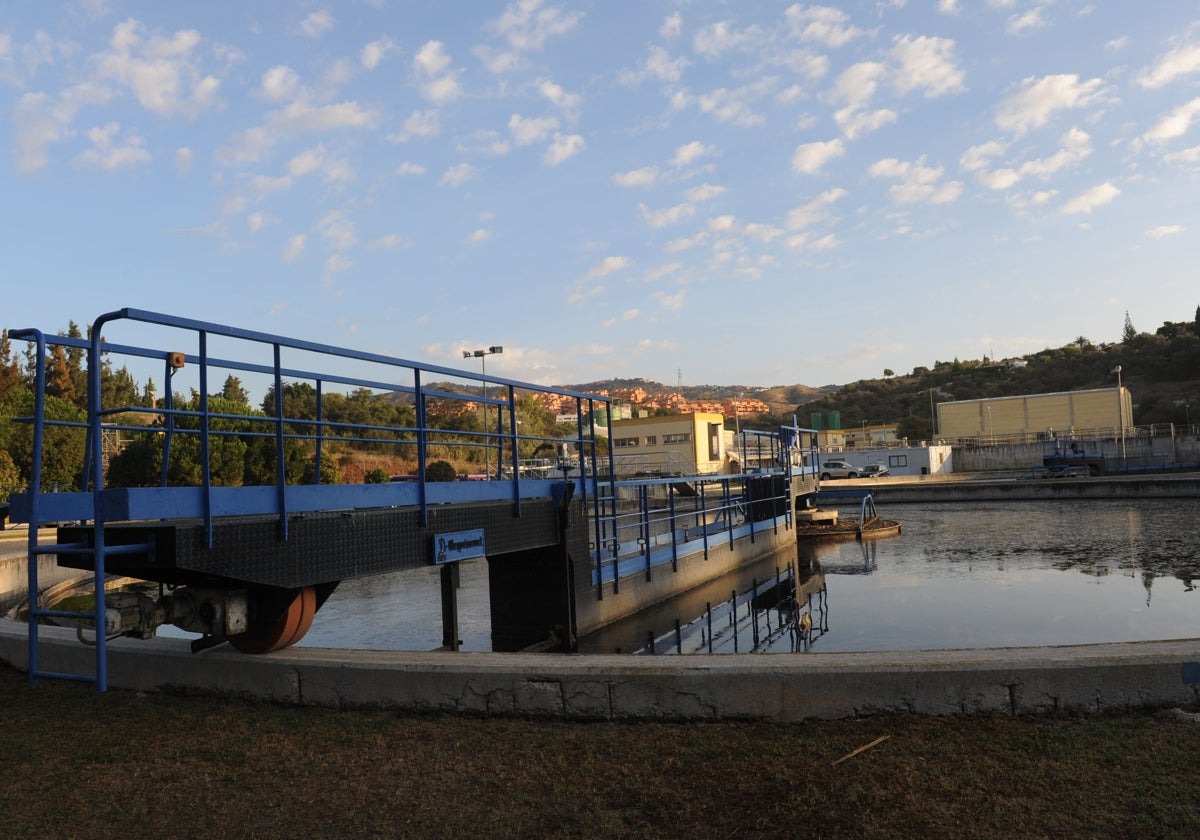Costa del Sol sets itself challenge of covering 30% of demand with reclaimed water
At the moment, only 7 of the 47 million cubic metres of the available treated waste water are sold, all for use on golf courses, and Acosol's goal is to reach 30 by extending its use to garden irrigation
The western Costa del Sol consumes between 90 and 100 million cubic metres of water per year. Around 60% of this comes from the La Concepción reservoir. Another 20 million cubic metres will be available from the modernised and expanded Marbella desalination plant, starting from this summer onwards. A further 11 will come from wells (Fuengirola and Guadalmansa). Reclaimed wastewater after tertiary treatment accounts for only 7 million cubic metres - a figure that the main water supply company Acosol wants to increase to 30, which would automatically mean reducing the pressure on drinking water resources by a third.
This was the central theme at a conference held at the Meliá Don Pepe hotel in Marbella a few days ago, as the culmination of the events marking Acosol's 30th anniversary.
The Costa - a pioneer
Enrique Miranda Páez, a retired engineer who has been linked to Acosol since its origins, advocated overcoming prejudices about reclaimed water and emphasised how in other latitudes this type of resource can be used for drinking, given the exhaustive treatment and technological advances. He underlined the possibility of saving conventional resources in a province cyclically marked by drought and reminded his audience that, back in the early 80s, the Costa del Sol was a pioneer in irrigation of golf courses with reclaimed water, although the quality was very poor at the time.
47 million cubic metres produced
Head of the integral sanitation service Sergio Martín was the one who proposed the challenge of raising the number from 7 to 30 million cubic metres in the medium term. The Costa is actually capable of producing more than 47 million cubic metres of reclaimed water in its treatment plants.
Overcoming prejudices and raising public awareness are some of the issues that Acosol has to face. There are also high health requirements and more than a dozen possible uses for these waters. These are set out in a 2007 Royal Decree that was further developed last year with a new regulation. Currently, the water company is working to extend usage to the irrigation of public parks and gardens. At a later stage, it would even try to reach private gardens. The CEO of Acosol, Matilde Mancha, insisted on this idea, appealing to the importance of making investments, breaking down barriers and creating social awareness.
Aquifer recharge
During the conference, other environmental aspects of wastewater reclamation came to light. Returning water to the environment in optimal conditions after tertiary treatment has important implications such as the possibility of recharging aquifers and improving ecosystems.
Several of the speakers acknowledged that, in some cases, there are problems with saline intrusion in the pipes, which means that the effluents obtained have a high conductivity. These are problems that are easy but costly to solve, with actions such as the casing and renovations that are being carried out in certain areas of the coast.
Shared management
The possibility of transferring resources between municipalities and basins through shared management also came up during the conference, with examples such as the transfer of regenerated water from Malaga to the Axarquia from the Peñón del Cuervo waste water treatment plant for irrigation purposes.

